If you are Mexican, or have Mexican roots, you might be wondering what Mexican Ancestry DNA results look like? Or if you already got your results back, maybe you want to compare yours to some other people from Mexico to get an idea whether yours fit in.
What you will learn in this post is that people from Mexico are very genetically diverse, and that there is not really a "typical" Mexican DNA result.
This post is divided into two sections. First, I will show you two examples of Mexican DNA results. One is from a person who was born in Mexico, and the other is from a person who has one Mexican parent (born in Mexico).
Both of these individuals reside in the United States, and have given permission for me to show you their DNA results, in the hopes that it will help you better understand what you might be able to expect from your own results.
The second section of this post will discuss what you can expect as far as quantity and quality of DNA matches.
Mexican Ethnicity Results on Ancestry DNA
Since the arrival of Europeans in Mexico, people from almost every continent have ended up living their lives out in Mexico. Descendants of these immigrants to Mexico will find themselves showing an incredible variety of ethnicities on their ethnicity estimate.
While it's true that many people in Mexico show Iberian Peninsula ancestry, inherited from their Spanish ancestors, and Native American ethnicity, the reality is that most Mexicans are much more genetically diverse.
There is a myth that "Iberian plus Native American equals Mexican" - and I would like to dispel that myth with this post. People from Europe, Asia, the Middle East, and Africa, lived all over Mexico.
Depending on where your Mexican ancestors were from, or if you are Mexican, where your family is from, your DNA results will vary. Someone from Tamaulipas will show different ethnicities than someone from Oaxaca, and they will both be different than someone from Mexico City or Durango.
Example of Mexican DNA Results from Ancestry
The image below e shows the DNA results of someone who was born in Mexico. Ancestry correctly identified the region of Mexico where is from, and where his most recent ancestors were from, the Western and Central Mexico region.
His family is from Morelos as far back as he has been able to trace.
As you can see, he has only the smallest trace of Iberian Peninsula - an amount that most people would ignore. In his case, I would suggest that he actually has very small amounts of Iberian inherited from many different Spanish ancestors. He was surprised by his Irish and Central Asian roots.
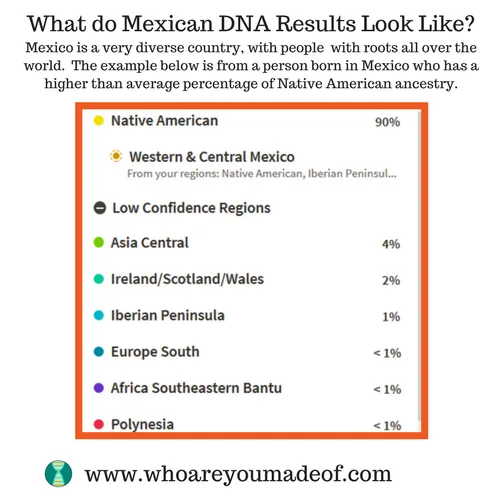
Example of DNA Results from a person with a Mexican parent
Perhaps most commonly, people are interested to know what DNA results might look like for a person who has a Mexican parent. The following image displays the DNA results of a young woman whose father was born in Mexico.
As you can see from her results below, she inherited her Iberian Peninsula DNA from her mother, who had no Mexican ancestry. This doesn't necessarily mean that she has no Iberian Peninsula ancestors on her father's side, but that if she does, they are so far back (5-7 generations at minimum) that she did not inherit DNA from them.
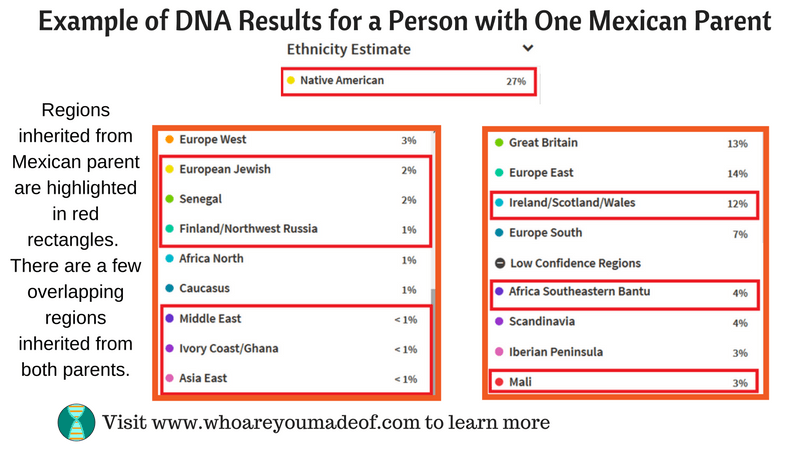
This particular person is a very good example of the genetic diversity shown by many Mexicans. You can see in the image, in the areas highlighted by the red rectangles, that she has inherited the ethnicities, in the order of highest to lowest, of Native American, Ireland/Scotland/Wales, Africa Southeastern Bantu, Mali, European Jewish, Senegal, Finland/Russia, Middle east, Ivory Coast/Ghana, and Asia East - all from her Mexican father.
We are in the process of working with her Mexican grandparents to do the Ancestry DNA test. I am sure that their results will be fascinating.
Read more: Is there such a thing as Mexican DNA?
DNA Matches on Ancestry for a Person With Mexican Roots
Most people are initially most interested in ethnicity estimates, but they eventually realize that their DNA test results allow them to locate actual living DNA relatives all across the country, and sometimes the world.
A database of DNA tests will only show matches to you if your relatives have done a DNA test.
DNA testing is most popular in the United States, so people who have many close relatives in other countries will not have as many DNA matches as someone whose family has lived in the United States for a long time.
The great thing about DNA testing is that most companies, Ancestry DNA included, allow you to continue to view new DNA matches for years after you do your test.
For example, I tested about four years ago, and I have more than four times as many DNA matches now that I did when I first started.
I've learned so much about my family just in this past year - all from a test that I took years ago. I am sure that you will have a similar experience, so don't give up hope if you are disappointed about how many DNA matches you have to start off with.
As more of your close and distant family tests their DNA, and as DNA testing becomes more popular in other countries, your DNA match list will grow.
Example of how many DNA matches a person who is born in Mexico has on Ancestry
The image below shows the number of 4th cousin or closer DNA matches that someone born in Mexico currently has (as of today) on Ancestry. When he first took his test a few years back, he only had two 4th cousins or closer, so the majority of his matches were very distant.
Gradually, over the years, he acquired a few new matches here and there. The closest match that he has on Ancestry is an estimated 3rd cousin match, though some of his 4th cousins might actually be 3rd cousins (read about 3rd cousins or distant cousins)
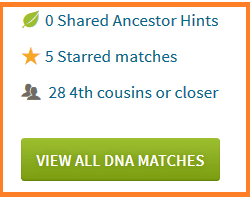
As of April, 2019, he now has 62 matches! The more matches, the more he can learn about his ancestry.
Example of how many DNA matches a person who has one Mexican parent has on Ancestry
Many people, especially those born outside of Mexico, will have just one parent who was born in Mexico.
The image below displays the number of DNA matches that the young woman who I mentioned above has on Ancestry DNA, as of today. Her DNA match list grows a little faster than the other kit that I manage, since one half of her family has lived in the US for several generations.
Thus, she has more relatives that have had the opportunity, and have chosen to, test their DNA.
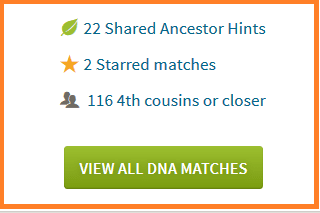
Quality of DNA matches on Ancestry for people of Mexican descent
Will Ancestry DNA be able to tell you whether you are closely related to someone? Absolutely, without a doubt, yes. If you have a close relative do an Ancestry DNA test, they will show up on your DNA test if they are related to you.
What about endogamy and Mexican DNA?
Generally speaking, Ancestry DNA does a great job with filtering out low-quality (read: coincidental) DNA matches. They do their best to report confidence levels, and it usually works very well.
There is one situation that comes up with people from Mexico who have a large amount of Native American ancestry: endogamy.
Endogamy, especially the type we see in genetic genealogy, occurs when there are many generations upon generations of people intermarry within the local region and have low amounts of genetic diversity.
Endogamy is very noticeable in the DNA match lists for people with Native American ancestry. Even though North and South America are large geographic areas, the two continents were populated entirely by a relatively small founding populations.
For thousands of years, people on the continents of North and South American could only intermarry with other people descended from that initial population. Their descendants, as a result, are often related to each other in many different ways - albeit very, very, distantly.
For example, the kit who I manage of the man who has 90% Native American ancestry has a DNA match on Family Tree DNA where he shares more than 220 centimorgans of DNA.
In a situation with no endogamy, this would mean a very recent ancestor, and a relationship of second cousin, approximately. It's not the case with this match, however, since they share dozens of small DNA segments - each implying the existence of a common ancestor hundreds or maybe even thousands of years ago.
The lesson here is to pay close attention to the size of the largest segment shared, not the total amount shared. In the case of Mexican DNA, this situation comes up most often in the context of Native American DNA, but endogamy exists in many populations all over the world, including right here in the United States.
Learn more about endogamy and DNA matches:
Learn More
If you are interested in learning more about your DNA results, or even how to choose a DNA test out of all the options available, why not visit my DNA Tools Page. There, you'll find great resources all about DNA testing, analyzing your DNA, ethnicity estimates, and DNA matches.
Conclusion
I hope that this post helped you learn a little bit more about what to expect from your Ancestry DNA results, or how yours measure up compared to others with Mexican ancestry who have taken this test.
If you have anything to add, I encourage you to leave a comment - I look forward to hearing from you.
Thanks for stopping by!

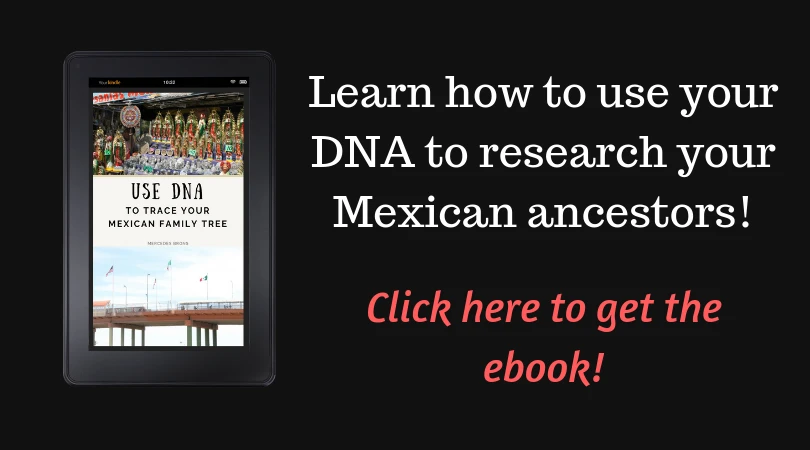

Lucas Hernandez
Thursday 9th of February 2023
My mother was born and raised in Bad Herself, Germany, married an American soldier and came here. They had a boy and girl together. They "lost touch" and lefty mom to live on an Indian reservation with hardly any English and no working skills in new Mexico. Moving to Texas with next to nothing in pursuit of her children, she met my father, whom had myself and my brother, never found them. My father was born and raised in Mexico, mover here when he was about 20 years old. I am now 37 and the only ones we've had here as family are the ones I speak of, and my brothers and mine own families, of course. Something has always seemed....... Off. Idk? I've always felt this emptiness, or need/want to know more of my background. Intrigued yet? Help me find the truth. Help me help the ones like myself..... No family.... No answers...... No right questions..... Thank you.
Agustin Medina
Tuesday 29th of March 2022
Thanks for a very informative article. Your statement about the tremendous diversity of a person of Mexican descent rings so true. Glad you confronted the long-standing assumption that Mexicans are mainly derived from a combination of Native American and Spanish. As you demonstrate, there's a lot more to it than that!